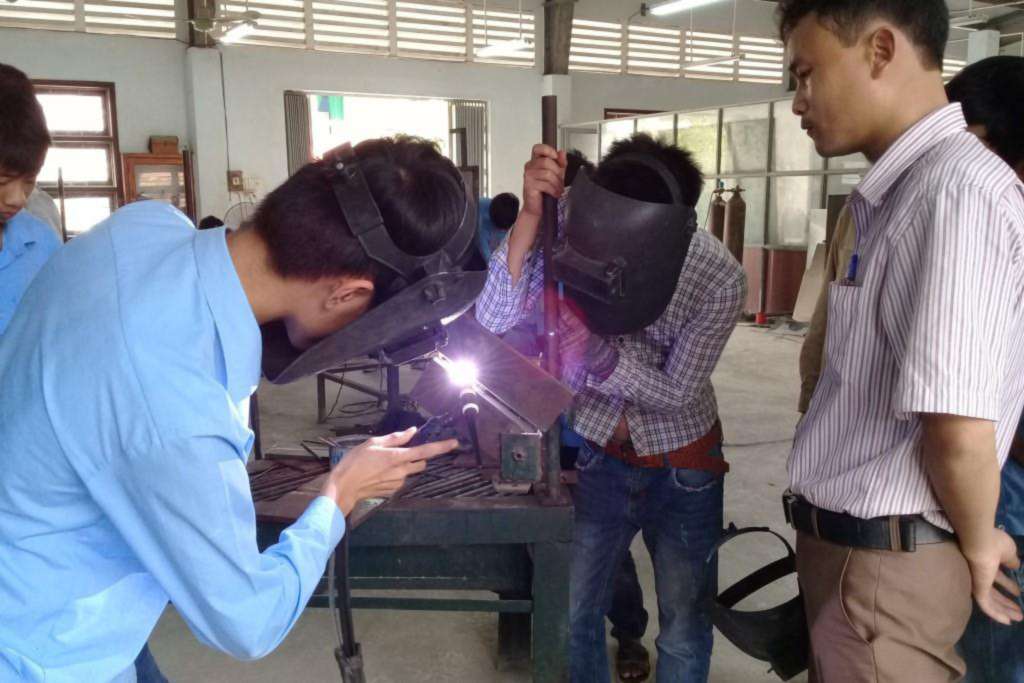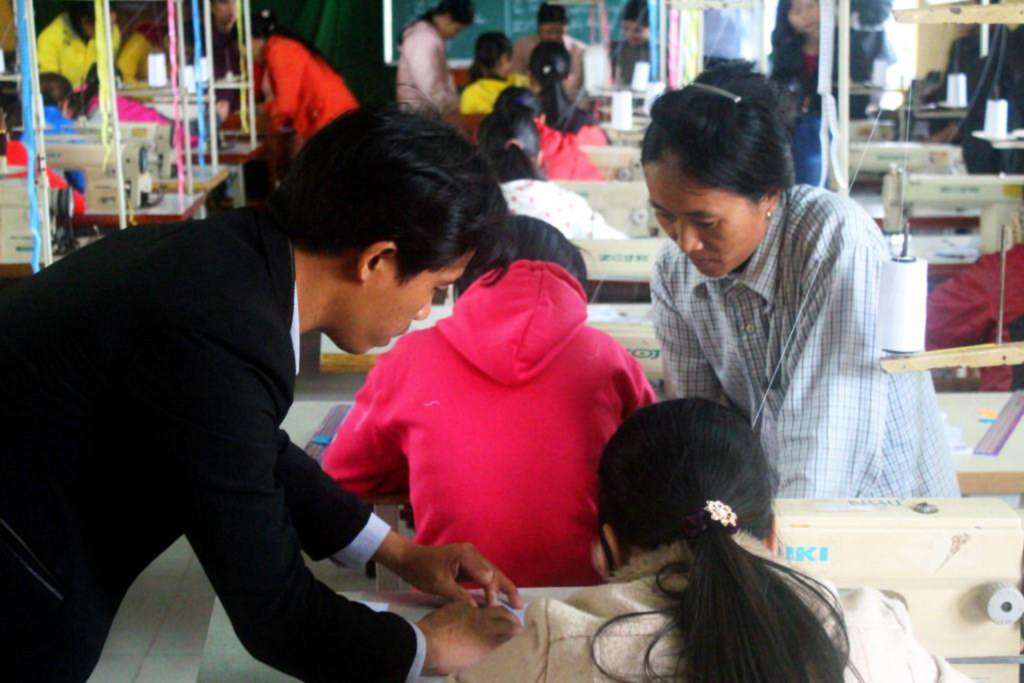Vietnam - Off-farm livelihood diversification support as a strategy to adapt to climate change
Livelihood options for poor and vulnerable women and men in lagoon and coastal areas of TT Hue province are by and large restricted to fishing, aquaculture and agriculture, and heavily dependent on natural resources. As the pressures on these resources are increasing inter alia due to changing climate conditions, and as rural employment opportunities are becoming increasingly scarce, local households face ever more risks, vulnerabilities and uncertainties.
On the other hand, TT Hue province is today home to six industrial zones and the demand for labour in various industries is relatively high. Therefore, aiming for increased economic diversification through off-farm salaried employment and self-employment opportunities, VIE/033 identified the need to support the provision of various vocational trainings to unemployed labourers in three target districts, allowing them to get access to up-to-date knowledge and develop the professional skills required by the local industries.
 Disadvantaged women attending their last cooking class before final examination, Phu Loc district
Disadvantaged women attending their last cooking class before final examination, Phu Loc district
Consequently, from 2014 to 2017, the project supported over 800 unemployed rural labourers in the project’s three target districts of Quang Dien, Phu Vang and Phu Loc, with trainings of various vocations that responded to the region’s labour demand, such as industrial sewing, cooking and food pairing, welding, engine mechanics, and electricity. These capacity building interventions aimed specifically at young people as well as disadvantaged women, the latter whom due to their more limited access to information and financial resources, tend to be more acutely affected by the various manifestations of climate change.
 Young men supervised during welding vocational training, Quang Dien district
Young men supervised during welding vocational training, Quang Dien district
Results of a comprehensive job and income survey, recently conducted as part of the project regular monitoring and evaluation among a 65% sample (520 randomly selected beneficiaries), showed that 71% of all graduates are now fulltime employed, with an average monthly income of 3,611,843 Vietnam Dong (VND) (about US$160). Interestingly, 8.1% of those newly employed came from resettlement areas, at present still considered major pockets of poverty, and 7.6% were registered as ‘poor’ or ‘near poor’ as per the Government of Vietnam’s official poverty classification. Over 88% of newly employed graduates now earn more than the minimum monthly income of 2,100,000 VND/month as per governmental Decree No. 182/2013 that was in vogue at the start of the project, and more than half of all graduates earn more than the minimum wage as revised and applied from January 2018 (3,090,000 VND as per Decree No.141/2017).
 Supervisor demonstrating industrial sewing exercise to female trainees, Phu Vang district
Supervisor demonstrating industrial sewing exercise to female trainees, Phu Vang district
Graduates from the industrial sewing (80.3%) and cooking classes (62.7%) accounted for the highest contribution to this result, with the large majority of their graduates now having fulltime contracts in the garment industry and tourism sector, both growth industries of regional and national significance.
These outcomes demonstrate that expanding the scope for off-farm income generating activities allows rural households to decrease their dependency on natural resources and diversify their economic opportunities, and contributes to people’s increased resilience to the effects of climate change.
↑ To the top
